Top Faqs for Annapurna Base Camp Trek
The Annapurna Base Camp Trek is one of the most iconic trekking routes in Nepal, offering an extraor...
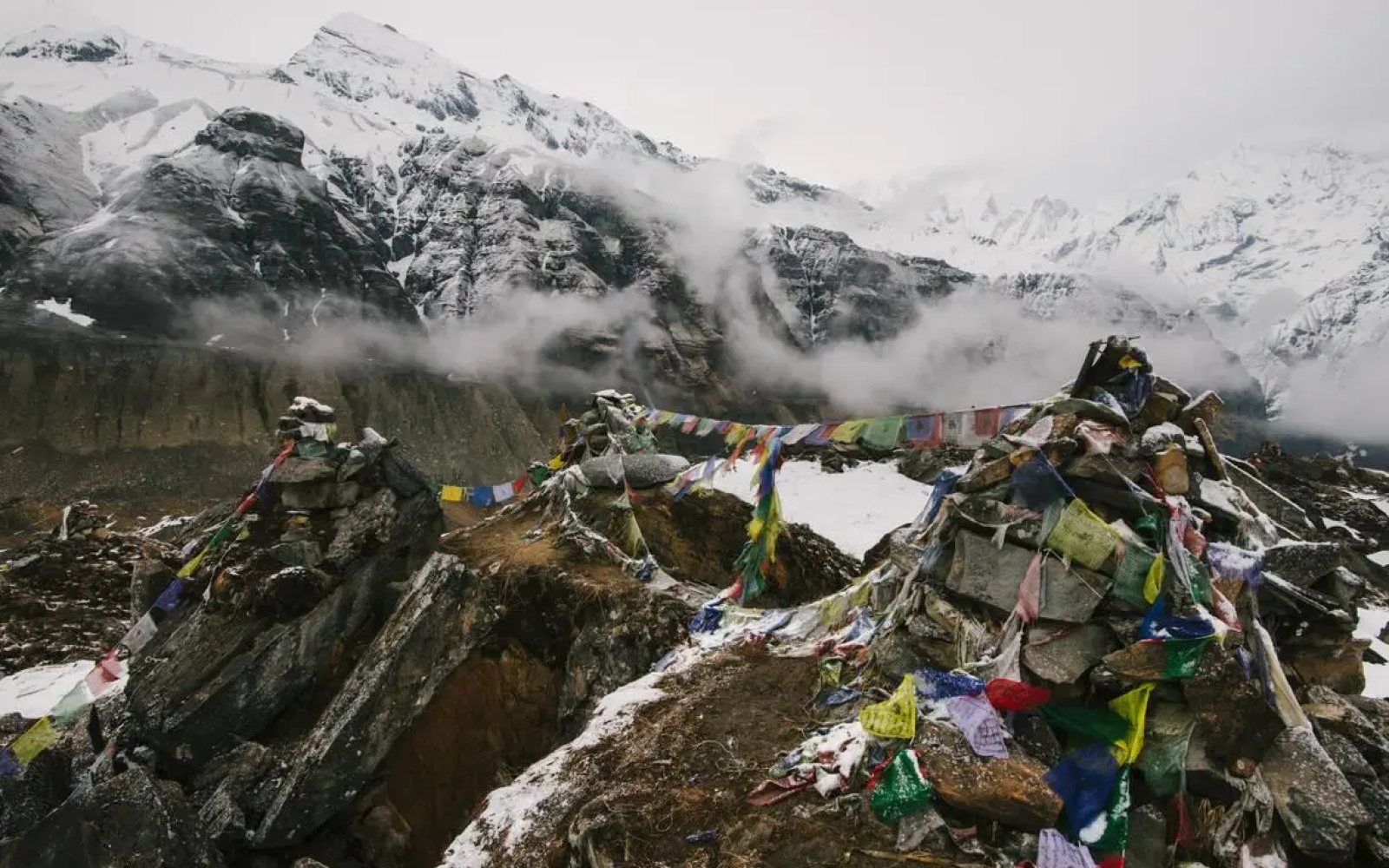
Whether you’re a first-time trekker or a seasoned hiker, the Annapurna Base Camp (ABC) trek is a memorable experience that demands preparation, awareness, and the right mindset.
Mount Annapurna stands as one of the most iconic and awe-inspiring peaks in the world. At 8,091 meters (26,545 feet), it is the tenth highest mountain on Earth and forms the centerpiece of the Annapurna Massif in north-central Nepal. The name "Annapurna" translates to "Goddess of the Harvests" in Sanskrit, and the mountain holds great spiritual significance for local communities. Its snow-clad slopes and jagged ridgelines make it a favorite among mountaineers, although it’s known for its technical difficulty and high fatality rate among climbers. While the summit remains for expert mountaineers, the base camp trek offers a close encounter with this legendary peak without the extreme risks of climbing it.
Himalayan Forever Treks understands the mystique and allure that Mount Annapurna holds for adventurers from across the globe. By curating expertly guided treks to Annapurna Base Camp, the company ensures that every traveler gets to experience the raw power and beauty of this sacred mountain. From sunrise views over the Annapurna range to quiet moments of reflection surrounded by glaciers and peaks, Himalayan Forever Treks turns a journey to Mount Annapurna into a once-in-a-lifetime memory.
Annapurna Base Camp (ABC), located at an altitude of 4,130 meters (13,550 feet), is one of Nepal’s most accessible and popular trekking destinations. Nestled deep within the Annapurna Sanctuary, a high glacial basin surrounded by a ring of towering peaks, the base camp provides a 360-degree panorama of some of the Himalayas’ most spectacular mountains, including Annapurna I, Machapuchare (Fishtail), Hiunchuli, and Annapurna South. The journey to ABC offers a diverse range of landscapes, from lush subtropical forests and terraced rice paddies to alpine meadows and glacier moraines.
What makes the ABC trek particularly attractive is the blend of natural beauty and cultural richness. As trekkers ascend through traditional Gurung and Magar villages, they are welcomed with warm hospitality, local cuisine, and vibrant traditions. Himalayan Forever Treks ensures that each of its guided treks not only covers the scenic highlights but also includes authentic cultural interactions that deepen the trekking experience. With attention to safety, comfort, and local engagement, the trek to Annapurna Base Camp becomes more than just a hike—it becomes an immersive Himalayan adventure.
The Annapurna Base Camp trek typically spans 7 to 12 days, depending on the itinerary and acclimatization schedule. Most treks begin in Nayapul or Jhinu Danda, following a well-trodden route through lush forests, charming mountain villages like Chhomrong and Bamboo, and ascending steadily to Machapuchare Base Camp before reaching ABC. The route is considered moderately challenging, suitable for trekkers with basic fitness and some experience. Key highlights include panoramic views from Poon Hill (on extended routes), the natural hot springs at Jhinu, and the surreal beauty of the Annapurna Sanctuary itself.

Himalayan Forever Treks offers various customized itineraries that balance adventure with comfort, designed to suit different trekking levels. The company's guides are seasoned experts with deep local knowledge, ensuring that trekkers are well-supported throughout their journey. Whether you’re drawn to the cultural richness of the trail, the biodiversity of the Annapurna Conservation Area, or the sheer majesty of the mountains, the ABC trek with Himalayan Forever Treks guarantees a safe, scenic, and unforgettable experience.
Timing your Annapurna Base Camp trek correctly is one of the most critical factors in ensuring a safe, enjoyable, and scenic journey. The two most popular trekking seasons in Nepal are spring (March to May) and autumn (September to November). During these periods, the weather is typically stable, visibility is excellent, and the trails are vibrant with either blooming rhododendrons or crisp, clear mountain views. Spring offers warmer temperatures and blossoming flora, making the trek feel alive with color and freshness. Autumn, on the other hand, follows the monsoon season, leaving behind crystal-clear skies and fresh air, ideal for capturing postcard-worthy mountain vistas.
While trekking during the monsoon (June to August) or winter (December to February) is possible, it requires extra preparation. Monsoon brings heavy rainfall, slippery trails, and limited visibility, while winter trekking involves freezing temperatures, snow-covered paths, and potential trail closures at higher altitudes. Himalayan Forever Treks provides detailed seasonal advice and route adjustments based on current weather and trail conditions. Their team ensures trekkers are well-informed and well-prepared, helping you choose the right season that matches your expectations and trekking experience. With professional support, your trek becomes a seamless adventure—regardless of the season you choose.
The Annapurna Base Camp trek is moderately challenging, requiring a good level of cardiovascular fitness, stamina, and mental determination. While it doesn’t demand technical climbing skills, the daily ascents and descents over rugged terrain and stone steps can be physically demanding, especially at higher altitudes. Preparing your body in advance will not only enhance your enjoyment but also reduce the risk of fatigue or injury on the trail. Ideally, you should begin training 8 to 12 weeks before the trek, incorporating a mix of cardio (hiking, jogging, cycling), strength training (especially for legs and core), and flexibility exercises. Weekend hikes with a backpack are especially helpful for simulating trekking conditions.
In addition to physical training, health assessments are equally important. Consulting your doctor for a pre-trek health checkup and discussing altitude-related precautions can go a long way in preventing complications during the trek. Himalayan Forever Treks offers expert advice on fitness benchmarks, training routines, and altitude sickness awareness. Their guides are trained in first aid and equipped to monitor trekkers’ health throughout the journey. By following a structured preparation plan and trusting the expertise of Himalayan Forever Treks, you’ll not only be physically ready for the Annapurna challenge but also mentally confident to embrace every step of the adventure.
Before setting foot on the Annapurna Base Camp trail, trekkers must secure two essential permits: the TIMS card (Trekkers’ Information Management System) and the ACAP permit (Annapurna Conservation Area Permit). The TIMS card helps Nepal’s tourism and security authorities track trekkers in case of emergencies, while the ACAP permit supports the preservation of the region's fragile ecosystem. These permits are mandatory for all foreign trekkers and are checked at various points along the trail. Failing to present valid permits can result in fines or denial of entry into conservation zones.
Himalayan Forever Treks takes the hassle out of the permitting process by organizing all the required documents for you before the trek begins. Their experienced team ensures that all paperwork complies with the latest government regulations, including proper identification, itinerary details, and emergency contact information. In addition to permits, trekkers should also be mindful of local rules and customs, such as respecting wildlife, minimizing plastic use, and dressing modestly in villages. Himalayan Forever Treks educates every client on responsible trekking practices, ensuring both cultural sensitivity and environmental stewardship throughout the journey.
Packing appropriately can make the difference between a comfortable trek and a challenging one. Since the Annapurna Base Camp trail takes you through various climate zones—from warm lowlands to chilly alpine regions—layering is key. Start with moisture-wicking base layers, followed by insulating mid-layers (like fleece or down jackets), and finish with a waterproof, windproof outer shell. Essentials include a warm sleeping bag (rated for -10°C or below), a sturdy pair of broken-in trekking boots, thermal gloves, a sun hat, UV-protection sunglasses, and trekking poles for stability on uneven terrain.
Beyond clothing, essential gear includes a headlamp with spare batteries, a refillable water bottle or hydration bladder, water purification tablets, basic first aid supplies, sunscreen, lip balm, and high-energy snacks. Lightweight yet durable gear helps reduce fatigue, especially during longer days on the trail. Himalayan Forever Treks provides a comprehensive gear checklist to all trekkers and also offers gear rental options in Kathmandu or Pokhara for heavier items like sleeping bags and down jackets. Their guides ensure that trekkers are well-prepared, checking gear before departure and offering packing advice tailored to the current season and route conditions. With the right gear and expert guidance, you’ll be ready to take on the Annapurna Base Camp trek with confidence and comfort.
One of the most important aspects of trekking in the Himalayas is understanding how altitude affects the body. The Annapurna Base Camp trek reaches an elevation of 4,130 meters (13,550 feet), and while it’s not considered extreme altitude, altitude sickness (Acute Mountain Sickness or AMS) can still pose a risk if proper precautions are not taken. Symptoms may include headaches, nausea, fatigue, dizziness, and loss of appetite. Preventing AMS starts with gradual ascent, proper hydration, and listening to your body. Avoiding alcohol, staying warm, and taking regular rest breaks are essential practices for maintaining health at higher altitudes.
Himalayan Forever Treks designs its itineraries to include sufficient acclimatization time, allowing trekkers to adapt to the changing elevation safely. Their guides are trained in recognizing early symptoms of AMS and equipped with basic first aid and oxygen support when needed. In more serious cases, they can coordinate emergency evacuations efficiently. The team emphasizes daily health checks and encourages an open dialogue so any issues can be addressed early. With their focus on safety and preparation, you can trek with peace of mind, knowing that your well-being is a top priority every step of the way.
One of the most charming aspects of the Annapurna Base Camp trek is staying in traditional Nepali teahouses—simple, family-run lodges scattered along the trail. These accommodations offer a unique cultural experience and a warm, welcoming atmosphere. While rooms are typically basic, with twin beds, shared bathrooms, and limited electricity, they are cozy and clean. Blankets are usually provided, but bringing your own sleeping bag is recommended for added warmth and comfort. As you ascend, the amenities become more limited, but the hospitality remains heartfelt and genuine.
When it comes to food, trekkers can enjoy a surprising variety of meals considering the remote location. Most teahouses offer a standard menu featuring dal bhat (lentil soup with rice and vegetables), pasta, noodles, soups, momos (Nepali dumplings), and pancakes. Meals are hearty and carbohydrate-rich—perfect for refueling after a long day on the trail. Hot drinks like ginger tea, masala chai, and lemon honey tea are widely available and help with hydration and warmth. Himalayan Forever Treks works closely with teahouse owners to ensure hygienic meals and comfortable stays for their clients. Their knowledge of the best stops and meal recommendations enhances the overall trekking experience, providing comfort, nutrition, and cultural immersion along the way.
While the Annapurna Base Camp trek is well-marked and accessible for independent trekkers, hiring a guide and/or porter can significantly enhance your trekking experience. A licensed guide provides invaluable knowledge about the region’s geography, culture, flora, and fauna, and can help navigate changing trail conditions, weather, or itinerary adjustments. A porter, on the other hand, lightens your load—literally—by carrying your heavy backpack, allowing you to conserve energy and focus on enjoying the trek. This can be especially important for those unaccustomed to multi-day hiking at high altitudes.
However, there are trade-offs to consider. Hiring staff adds to the trek’s cost and may reduce your sense of independence if you're used to solo hiking. That said, the benefits usually far outweigh the cons, especially in terms of safety and cultural insight. Himalayan Forever Treks ensures that all their guides and porters are licensed, insured, fairly compensated, and trained in responsible trekking practices. The company matches trekkers with reliable professionals who speak good English, understand the route thoroughly, and prioritize your well-being. Choosing experienced help through Himalayan Forever Treks gives you peace of mind and a deeper connection to the Annapurna region, enriching every aspect of your journey.
Safety in the Himalayas starts with preparation but also relies heavily on your ability to respond to unexpected situations. Common risks on the Annapurna Base Camp trek include altitude sickness, slips and falls, extreme weather, or illness. Staying hydrated, trekking slowly, and keeping warm are foundational safety practices. It’s also wise to share your itinerary with someone back home, carry a charged phone or GPS device, and stay updated on weather forecasts. Knowing the signs of altitude sickness and responding quickly by descending can prevent serious complications.
Himalayan Forever Treks prioritizes safety at every stage of the trek. Their team is trained in wilderness first aid, carries emergency kits, and maintains direct communication with regional rescue services. In severe cases, they can coordinate helicopter evacuations quickly, especially when supported by the right insurance. That’s why comprehensive travel insurance that includes high-altitude trekking and emergency evacuation is non-negotiable. The company advises clients on selecting the right insurance policy before arrival. With Himalayan Forever Treks, you’re not just exploring the Himalayas—you’re doing so with a safety net backed by professionalism and care.
Trekking through the Annapurna region is not just a journey through nature—it's a journey through the heart of Nepalese culture. The trail passes through Gurung and Magar villages, Buddhist monasteries, and Hindu shrines, each with deep-rooted traditions and spiritual significance. Understanding and respecting these local customs is essential. This includes dressing modestly, always asking before taking photos of people, and observing etiquette such as removing shoes before entering homes or temples. Greetings like “Namaste” go a long way in showing respect and building connections with locals.

Equally important is trekking with environmental awareness. The Annapurna region is part of a protected conservation area, and sustainable practices are vital to preserving its beauty. Trekkers should avoid single-use plastics, carry refillable bottles, and properly dispose of waste. Staying on marked trails and respecting wildlife habitats also contributes to long-term ecological balance. Himalayan Forever Treks strongly promotes eco-friendly trekking by partnering with local communities, supporting clean-up initiatives, and ensuring their team follows Leave No Trace principles. By trekking responsibly, you help preserve both the culture and the environment for future generations of adventurers.
Trekking to Annapurna Base Camp is one of the most budget-friendly high-altitude adventures in the world, but planning your expenses in advance can help you avoid surprises. A standard ABC trek costs anywhere from $800 to $1,500 USD, depending on the length of the trek, season, services, and whether you’re traveling solo or with a group. Key costs include permits (TIMS and ACAP), accommodation, meals, guide/porter services, transport (to/from Pokhara), and gear rental. You should also budget for tips, snacks, charging electronics, and hot showers at higher elevations, which may have additional fees.
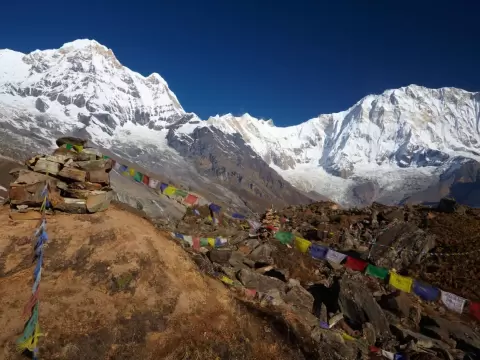
Himalayan Forever Treks provides transparent pricing with no hidden costs, and offers flexible packages suited to different budgets. Group treks tend to be more economical, while private or customized treks allow for more personalized comfort. Money-saving tips include traveling in a small group, sharing porter services, and bringing some snacks or gear from home. ATMs are available in Kathmandu and Pokhara, but cash (Nepali rupees) is essential on the trail, where digital payments are rare. With the right planning and support from Himalayan Forever Treks, you can enjoy a rich experience without overspending.
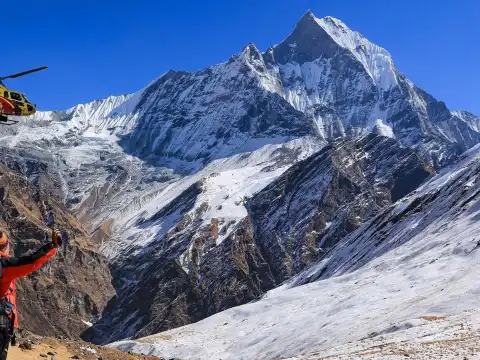
Annapurna Base Camp Trekking Outline Itinerary
Day 1: Arrival in Kathmandu and transfer to hotel
Day 2: In Kathmandu with sightseeing tour and trek preparation
Day 3: Drive to Pokhara - 06 hours on road
Day 4: Drive from Pokhara to Ghandruk village -04 hrs
Day 5: Trek to Chomrong village - 06 hrs
Day 6: Trek to Dovan via Bamboo - 06 hrs
Day 7: Trek to Machhapuchare Base Camp -06 hrs
Day 8: Trek to Annapurna Base Camp - 04 hrs
Day 9: Trek to Bamboo - 06 hrs
Day 10: Trek to Jhinu-Danda a place with hot spring - 06 hrs
Day 11: Short walk and drive to Pokhara -02 hrs
Day 12: Drive to Kathmandu and transfer to hotel
Day 13: International departure for homeward bound
Annapurna Base Camp Short Trek Outline Itinerary
Day 1: Arrival in Kathmandu and Transfer to Hotel
Day 2: Fly to Pokhara (820m) - Drive to Matkyu - Trek to Sinuwa (2360m)
Day 3: Trek to Himalaya (2920m)
Day 4: Trek to Annapurna Base Camp (4130m)
Day 5: Back to Sinuwa (2360m)
Day 6: Trek back to Kyumi - Drive back to Pokhara (820m) by Jeep
Day 7: Drive from Pokhara to Kathmandu by Tourist Bus
Day 8: Final Departure
Annapurna Base Camp Trek - 6 Days Outline Itinerary
Final Preparations and Mental Readiness
In the weeks leading up to your trek, final preparation is key to ensuring a smooth adventure. Review your gear checklist, double-check that all your travel documents and insurance are in order, and begin tapering your physical training to stay energized for the trek. Inform a trusted contact of your itinerary, keep digital and printed copies of permits, and ensure your vaccinations are up to date. If you haven’t already, spend a day or two in Pokhara before starting the trek to adjust and pick up last-minute supplies.
Equally important is your mental readiness. Trekking in the Himalayas can test your patience, endurance, and flexibility. Weather changes, long climbs, and basic amenities may challenge your comfort zone. But with the right mindset—gratitude, openness, and resilience—each day becomes a fulfilling part of the journey. Himalayan Forever Treks supports you from day one, helping you set realistic expectations and prepare mentally for the trek. With their expert guidance, you’ll not only reach Annapurna Base Camp—you’ll enjoy every step of the path that leads you there.
The Annapurna Base Camp (ABC) trek stands out as one of the most iconic and rewarding trekking experiences in Nepal—and for good reason. Unlike other high-altitude treks, ABC offers an incredible combination of dramatic landscapes, manageable altitude, and cultural richness, all within a relatively moderate duration of 7 to 12 days. The route takes you through lush rhododendron forests, terraced farmlands, and serene mountain villages, gradually unveiling jaw-dropping views of peaks like Annapurna I, Machapuchare (Fishtail), Hiunchuli, and Annapurna South. At the base camp itself, trekkers are surrounded by a stunning 360° amphitheater of Himalayan giants.

Beyond the scenery, the ABC trek offers a deeply immersive cultural experience. You’ll interact with warm-hearted Gurung and Magar communities, enjoy traditional Nepali cuisine, and relax in natural hot springs—all while trekking through one of the world’s most biodiverse and protected regions. For adventurers seeking a balance of natural beauty, cultural connection, and physical challenge, the Annapurna Base Camp trek is a once-in-a-lifetime journey that doesn’t demand the extreme endurance of other Himalayan expeditions.
Why Choose Himalayan Forever Treks?
When it comes to making the most of your Annapurna adventure, Himalayan Forever Treks is a name you can trust. With years of experience guiding trekkers through Nepal’s most remote and beautiful landscapes, the company is known for its professionalism, safety-first approach, and deep local expertise. Their team of licensed guides, responsible porters, and dedicated staff are committed to providing not just a trek, but a fully supported, enriching Himalayan experience.
[plan-my-trip]
What sets Himalayan Forever Treks apart is their personalized service—they tailor itineraries to match your fitness level, interests, and travel schedule. They also emphasize eco-friendly practices and ethical treatment of staff, ensuring your trek benefits both the environment and local communities. From handling permits and logistics to sharing insights into local culture and nature, Himalayan Forever Treks is with you every step of the way—making your trek smoother, safer, and more meaningful.
Conclusion
The Annapurna Base Camp trek isn’t just a hike—it’s a transformative experience that offers both inner growth and outer adventure. You’ll stand beneath some of the highest peaks on Earth, witness Nepal’s extraordinary natural beauty, and forge lasting connections with its people and culture. Whether you’re a seasoned trekker or a first-time visitor to the Himalayas, this journey is designed to challenge, inspire, and reward you in equal measure.
With Himalayan Forever Treks as your trusted partner, you can trek with confidence, knowing that every detail is taken care of—from safety and logistics to cultural immersion and environmental responsibility. Choose adventure. Choose connection. Choose Annapurna. Let Himalayan Forever Treks help you take that first unforgettable step.
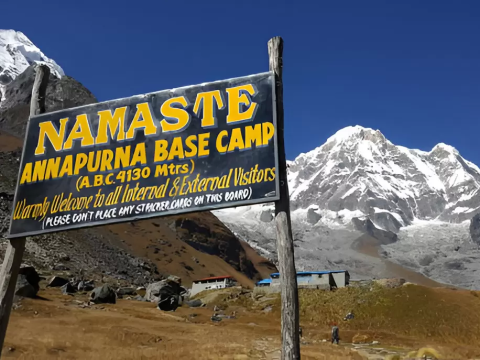
The Annapurna Base Camp Trek is one of the most iconic trekking routes in Nepal, offering an extraor...
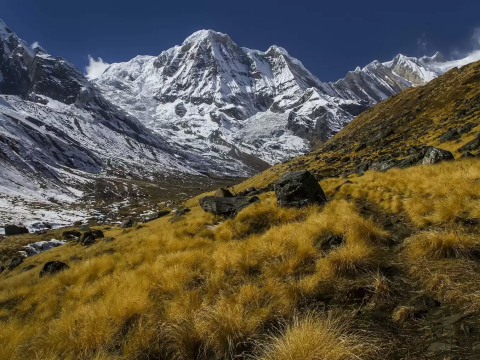
The Annapurna Region is one of the most sought-after trekking destinations in Nepal, offering a rich...
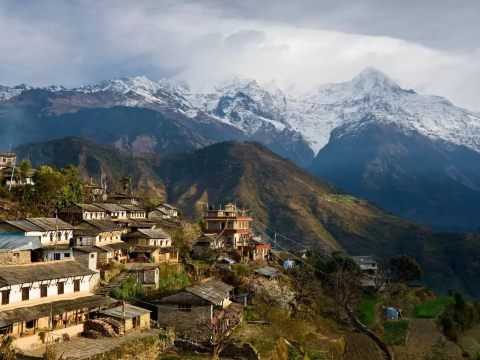
The Everest Base Camp (EBC) Trek and Annapurna Base Camp (ABC) Trek are two of the most iconic and s...
